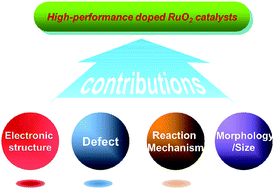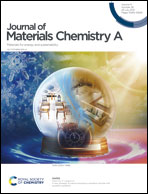Recent advances in doped ruthenium oxides as high-efficiency electrocatalysts for the oxygen evolution reaction
Abstract
Rutile ruthenium oxide (RuO2) exhibits relatively high reactivity towards the oxygen evolution reaction (OER) due to its moderate capacity to bind oxygen. Thus, RuO2 has been demonstrated as a benchmark electrocatalyst for the anodic reaction of water splitting, especially in an acidic electrolyte. Nevertheless, there is still much room to promote the OER catalytic activity and the operational stability of RuO2 to fulfill the requirements of practical applications. Optimizing the composition of RuO2 by a simple doping strategy can be considerably beneficial, with enhanced catalytic activity and excellent stability achieved simultaneously. This review presents the recent progress in doped ruthenium oxides as high-efficiency electrocatalysts for the OER, with various types of dopants and design strategies summarized as well. Maps of OER performance outcomes, including activity and stability, are presented to demonstrate the advantages of doping and to compare the different effects of various introduced metal elements. Special attention is paid to a clearer understanding of triggering reaction mechanisms by a series of characterizations. The remaining challenges and future research directions are also proposed.

- This article is part of the themed collection: Journal of Materials Chemistry A Recent Review Articles


 Please wait while we load your content...
Please wait while we load your content...